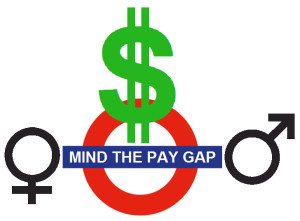Let’s look closer at the Gender Pay Gap
I’m a big believer in equality and I’m no stranger to the gender pay gap. However, before reading an article a couple of weeks ago, I had never heard of the so-called ‘Equal Pay Day’. This day, which this year fell on the 9th November, marks the day in the year when the average woman stops being paid compared to the average man. So technically this year, women missed out on around a month and a halves’ pay compared to their male counterparts.
9th November marks the day in the year when the average woman stops being paid compared to the average man
Now, there are several points I want to get across in this short article, with the first point arguable being the most important: I do not believe that women are superior to men – women, under no circumstances, should not be given a job just because they are female, they should be given it off merit alone. Thus, this article is not saying that women should make up 50% of the highly-qualified and skilled work force, and therefore always be paid the same as men. Take for example, for introduction of the so-called ‘Blair Babes’ (which is sexist in itself). This saw the number of women Labour MPs in the House of Commons go from thirty-seven in 1992 to ninety-six. This raised several questions with the most prominent one people – were the women only given this opportunity to clear the Labour Party of any sexist accusations it may have received? Or maybe the women were simply better candidates than the men that year. However, this appears too much of a coincidence to be true, and the scheme was heavily critiqued.
Now that I have made that point clear I hope I have shifted the opinion that I am not an angry feminist who believes women should have more rights and opportunities over men.
The second point I would like to come to is the sheer denial that I noticed on the comment section of the BBC website where I saw this article published. The article, as well as the BBC, were slammed for being ‘left-wing’ and ‘feminists’. This raises a single question: is the gender pay gap that engrained in society that people are failing to see that this is a problem? The issue raises the wider debate of ‘natural’ sexism in the today’s culture.
it is an embarrassment that a developed country in the twenty-first century cannot offer equal opportunities to both of the two sexes
But how can this be? Even the European Commission acknowledges this financial, political and social problem as a formal issue: they even have a website committed to women receiving equal pay. They claim that on average, women are paid 16% less per hour than males. However, this can vary: a report published on the government website (17th November), showed that women working in finance and insurance sections are the worst affected with some earning 40% less than men.
But why is this? Is this simply because women are less educated than men? No, according to the same source, 60% of graduates in the EU are women, and more than half of graduates in the UK are also women. However, when you compare this to the percentage of women CEOs at top companies, females make up for less than 4% of this figure. Clearly, something isn’t adding up here: are women being exploited for profit? Or again, are men simply better at performing in high positions?
Simply put, there is no single answer as to why women are paid less than men. The whole issue raises a number of debates and perhaps the progression in overall equality is the only solution to reducing this difference in pay. What is certain though, is that it is an embarrassment that a developed country in the twenty-first century cannot offer equal opportunities to both of the two sexes.


Comments (1)
The gender pay gap is one of the biggest first world misconceptions.
The US had something like 70 cents to a dollar but this was just the average yearly female full time wage divided by the average male full time wage.
This was not adjusted for the extra hours men do on average or the different wages in different industries – when it was it brought the gap down to 95:100. Still not equal but then I pose you the question; if women were paid less for the same work then why aren’t companies full of women?
If the answer is simply that they are not given the chance then I’ll reserve my right to wholeheartedly disagree, and perhaps argue that in the current climate that they are given a much larger one.